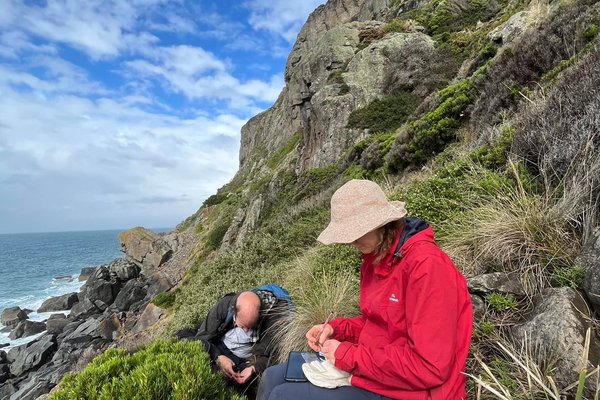In search of undescribed species in northern Australia
Bush Blitz uncovers the remarkable diversity of amphibians and reptiles that call Bradshaw Field Training area home.

© Australian Museum
Our knowledge of the biodiversity of Australia is far from complete, making conservation and land-use planning a bit of a guessing game in many parts of Australia. One fantastic initiative to combat this lack of knowledge is Bush Blitz, a program that brings together teams of biologists to help document the plants and animals of Australia with a particular focus on species discovery. The latest Bush Blitz was held in the Northern Territory this month, and we were lucky enough to be invited along to help survey the poorly-known frogs and reptiles of Bradshaw Field Training Area. We found over 55 species of frog and reptile, some of which are likely to be undescribed species. It’s a step forward in our knowledge of Australia’s biodiversity, and how to best manage it into the future.
Bush Blitz expeditions have dramatically increased our knowledge of Australia’s biodiversity since their commencement in 2010, providing new records of plants and animals across the continent, and resulting in a huge number of new species - over 1000 new species of Aussie animal to date!
The latest Bush Blitz expedition has just ended, and we were lucky enough to be a part of it! From 8-19 May, a team of biologists from the Australian Museum, Museum and Art Gallery of the Northern Territory, Western Australian Museum, Queensland Museum, Northern Territory Herbarium, Darwin Botanic Gardens and Aurecon led by the Bush Blitz team, surveyed Bradshaw Defence Field Training Area in the western top-end of the Northern Territory. Sitting north east of the Victoria river, the property spans 870 000 hectares of diverse habitat. It’s an area where semi-arid spinifex sandplain meets tropical savannah and steep rocky plateau gorges.
As part of the Herpetology team, responsible for searching the property for known and new species of frog and reptile, we joined scientists from the Museum and Art Gallery of the Northern Territory and the Western Australian Museum, primarily searching for dragons, skinks and monitors in the day and frogs and geckos at night.
Given the vast areas without any roads, access to rocky streams and remote gorges was made possible via helicopter- making our work as thorough and efficient as possible, and increasing our chances of finding unknown critters. We were dropped off in the afternoon at locations that we suspected were the best for finding frogs and reptiles, and picked up in the morning after a night of searching the terrain via torchlight.
During the Bush Blitz, we recorded more than 40 reptile species and 15 frog species in the most thorough survey of Bradshaw to date. Reptile finds included Marbled Velvet Geckos (Oedura marmorata), Snake-eyed Skinks (Cryptoblepharus spp.) and Spotted Rock Geckos (Gehyra nana) adorning the rocky cliffs, while the lowlands habitat yielded Frill-necked Lizards (Chlamydosaurus kingii), Centralian Blue-tongue’s (Tiliqua multifasciata) and Beaked Geckos (Rhynchoedura sexapora). On the Amphibian front, Magnificent Tree Frogs (Litoria splendida) sheltered in rocky gorges and tiny Rockhole Frogs (Litoria meiriana) bounced around the waterholes in the uplands, while Rocket Frogs (Litoria nasuta) and Northern Snapping Frogs (Cyclorana australis) inhabited the lowland floodplains.
During the Bradshaw Bush Blitz, we found frogs and reptiles that had not been recorded in the area before, and even more excitingly, species that are likely to be undescribed. However, as so many species look so similar across the top end of Australia, a lot of detective work (particularly DNA analyses) will be needed before we can be sure. Stay tuned!
It’s incredibly important to know where different species occur, what areas hold the most biodiversity, and which species are likely to be under greatest threat. Only by knowing this can we make informed planning decisions to ensure future generations inherit a country with healthy ecosystems full of a diverse array of unique plant and animal species.
Stephen Mahony, Technical Officer, Herpetology, AMRI
Dr Jodi Rowley, Curator of Amphibian and Reptile Conservation Biology, AMRI & UNSW
More information:
- Bush Blitz is an innovative partnership between the Australian Government, BHP Billiton Sustainable Communities and Earthwatch Australia. It is the world’s first continent-scale biodiversity survey, providing the knowledge needed to help us protect Australia’s unique animals and plants for generations to come.












